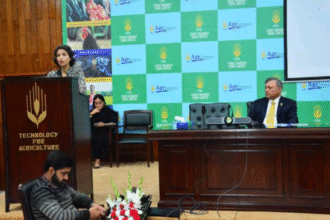By: Javed Khan
Deputy Inspector General of Police Hazara Region Nasir Mahmood Sati visited Haripur district, took a briefing from DPO Haripur and DC Haripur on the security situation regarding Muharram-ul-Haram, met with peace committee officials and Shia clerics, visited the control room, procession routes and Imambargah to review the security situation in detail. According to the details, DIG Hazara Nasir Mahmood Sati visited Haripur district where he held a meeting with DPO Haripur Farhan Khan and DC Haripur Shozab Abbas. In which DPO Haripur and DC Haripur presented a detailed briefing to DIG Hazara regarding the security arrangements for Muharram-ul-Haram.

On this occasion, DIG Hazara also visited the procession routes of the 8th and 9th Muharram and the Central Imambargah, Motian, and while reviewing the security arrangements in detail, he gave instructions to the officers and men posted on security and said that there should be no negligence in terms of security during Muharram, and that they should perform their duties in the best possible manner while remaining alert and alert during duty. The clothes of people coming to participate in the procession should be searched, checking, walk-through gates, and security cameras should be installed at the entrance and exit routes of the procession, and a close watch should be kept on suspicious persons. DIG Hazara met with Shia clerics and administrators during his visit to the Central Imambargah and got information about the security, for which he expressed his gratitude, terming the arrangements made by the police and district administration as satisfactory. Speaking on the occasion, DIG Hazara said that Hazara Police has completed all security arrangements to maintain peace and order during Muharram. Miscreants will not be allowed to disturb this peaceful atmosphere and strict legal action will be taken against such elements.
Later, DIG Hazara also visited the control room established in DPO Office Haripur. DPO Haripur informed about the monitoring arrangements through security cameras installed on the procession routes. DIG Hazara instructed the police personnel deployed in the control room that the purpose of the control room is to provide immediate rescue and legal assistance in any emergency situation and this should be ensured in every situation.





